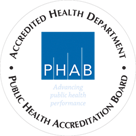 Federal law states that early intervention services will be provided in natural environments, including home and community settings.
Federal law states that early intervention services will be provided in natural environments, including home and community settings.
Early Intervention services should be family-centered
The regulations for Part C of the Individuals with Disabilities Education Act indicate that, to the maximum extent appropriate, early intervention services will be provided in natural environments, including home and community settings in which children without disabilities participate. Services can be provided in a setting other than the natural environment only when early intervention cannot be achieved satisfactorily in a natural environment. {(SEC.635 and SEC.636)}
Providing services in natural environments is the law, but more importantly, it reflects the core mission of early intervention, which is to empower families to provide learning opportunities for their children within their everyday activities and routines.
Questions and answers
Why are everyday routines, activities, and places important?
Children learn through play. Research confirms that everyday experiences, events, and situations provide children with the best opportunities to learn and develop.
How are a child's everyday routines, activities and places identified?
Everyday routines, activities and places are unique to each child and family. They are identified by your family as you talk about your typical daily activities, such as visiting grandpa, walking to the store, getting the mail, feeding the dog, and doing the laundry. Children learn about "water" in the bathtub, washing hands in the sink, getting a drink, splashing in a puddle, or swimming in a pool. In addition to learning what water is, children learn self help skills like drinking from a cup, hand and face washing, and even motor skills, i.e., walking and jumping. The location of these everyday routines and activities include places like the bathroom, kitchen sink, backyard, and community playground. These activities are your child's opportunities for learning and your family's opportunities for enhancing your child's development.
Guiding principles
A child's optimal development begins with identifying the child as a person first and secondly, focusing on the development of the child with special needs within their Natural Environments.
- early intervention services are provided in the home and community settings that are natural and normal for typical developing children.
- children (with delays) have opportunities to develop and use their skills while playing with children who do not have developmental delays.
- children with and without developmental delays learn from each other.
- families are empowered to set goals and expectations for their children
A child's greatest resource is their family.
Early intervention services occur in settings where the child and family spend most of their time during the day .


